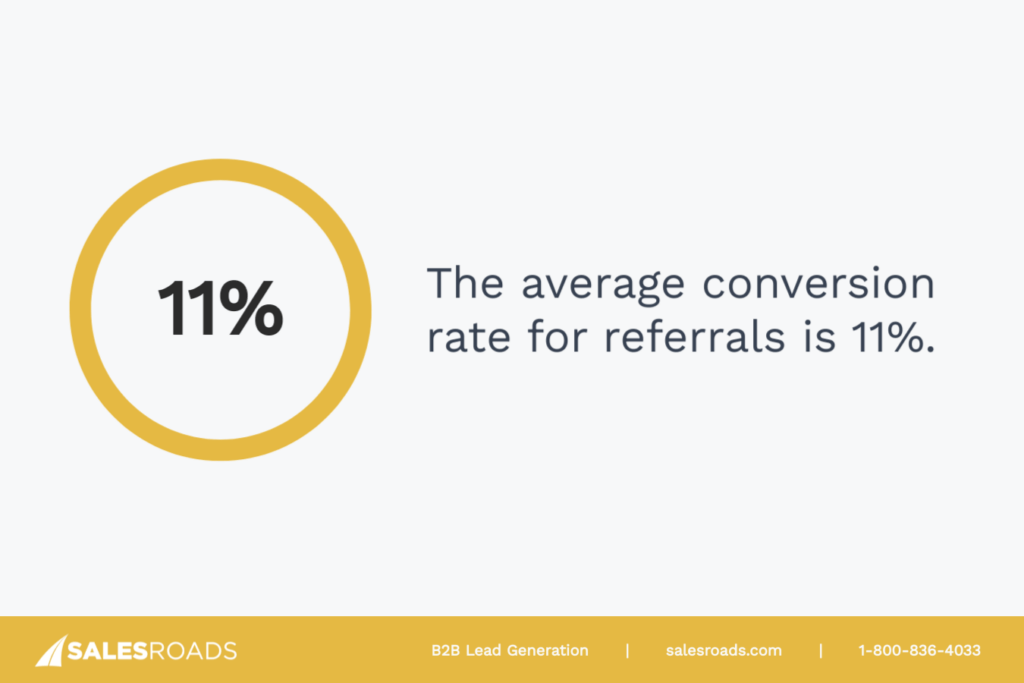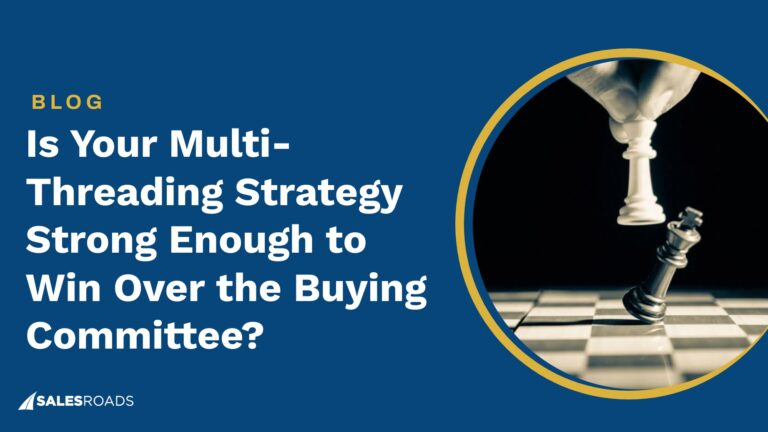Navigating the complex landscape of sales, businesses often find themselves in a common predicament – the relentless pursuit of leads. While the desire for more leads is a universal chorus, the challenge lies in crafting a robust process that effectively generates and converts these leads.
Understanding Lead Generation
Lead generation is the lifeblood of any sales-driven organization, acting as the starting block for the journey toward successful conversions. It isn’t just about attracting people; it’s about attracting the right people – potential customers who show interest in what your business offers.
This process is intricate and multi-faceted, involving various strategies and channels to identify and cultivate potential customers for your products. Effective lead generation is a foundational step in building a robust sales pipeline, ensuring a steady flow of prospects that can be nurtured and converted into paying customers.
This understanding forms the basis for all sales strategies and is crucial for businesses aiming to grow and thrive in competitive markets.
Defining a sales lead
Simply put, a sales lead is an individual or organization that shows interest in your products and has the potential to become a customer. However, not all leads are created equal. They can be broadly categorized into three types:
Cold leads: These are individuals who have had little to no prior interaction with your business. They might be aware of your brand but haven’t shown active interest in your offerings. Engaging cold leads requires strategic outreach and effective communication to ignite their interest.
Warm leads: Warm leads have shown some level of interest in your products. This might be through actions like subscribing to a newsletter, following your brand on social media, or attending a webinar. These leads are more receptive to sales pitches as they have a baseline understanding of what your business provides.
Hot leads: The cream of the crop, hot leads, are those who display a clear intent to purchase. They might have inquired about your products or asked for a quote. These leads are the closest to conversion and require timely and personalized attention to seal the deal.
Understanding these distinctions is crucial for tailoring your sales approach and maximizing the effectiveness of your lead generation efforts since each type of lead needs a different level of interaction.
Defining your sales funnel
The sales funnel is a visual representation of the journey a lead takes towards becoming a customer. It’s often visualized as an inverted pyramid, representing the journey that potential customers go through, from first learning about your business to making a purchase.
It comprises three critical stages – Top of the Funnel, Middle of the Funnel, and Bottom of the Funnel, functioning as a strategic model for nurturing leads.
TOFU: This is the widest part of the funnel, encompassing the initial stages where awareness is created. Potential leads are drawn in through various marketing and sales efforts, like social selling, cold calling, or email campaigns. The focus here is on educating and informing a broad audience.
MOFU: At this stage, leads have shown some interest and are exploring their options. The focus shifts to nurturing these leads by providing more targeted information, such as case studies, product demos, or free trials. The goal is to build a relationship and establish trust.
BOFU: Here, leads are on the brink of making a purchase decision. The strategies become more personalized and persuasive, aiming to convert leads into customers. This could involve offering special discounts, conducting one-on-one meetings, or providing detailed product comparisons.
Navigating through the sales funnel is a nuanced process, requiring a deep understanding of customer behavior and preferences. By effectively guiding leads through each stage of the funnel, you can significantly enhance your lead generation and conversion rates, ultimately driving sales and growth.
Challenges in Generating Sales Leads and How to Overcome Them
The landscape of generating sales leads is constantly evolving, presenting a myriad of challenges for businesses. In today’s competitive environment, the ability to adapt and overcome these hurdles is critical.
Sales teams must not only be aware of these challenges but also be equipped with innovative tools, techniques, and strategies to navigate them successfully.
Identifying and reaching the target audience
One of the foremost challenges in sales is identifying and effectively reaching the right target audience. Misidentifying your audience can lead to wasted efforts and resources, and a significant disconnect between your offerings and market needs.
This misalignment can result in poor sales performance, and decreased ROI on your campaigns, and can even tarnish your brand reputation if the messaging is perceived as irrelevant by the unintended audience.
To overcome this challenge, businesses should invest in comprehensive market research to craft an accurate prospect list. From leveraging social platforms to choosing a data provider, there are several list building strategies that you can use to leverage your list tailored to your ICP and buyer personas.
Dealing with market saturation
Operating in a saturated market poses significant challenges, including difficulty in differentiating from competitors and capturing consumer attention. This saturation can lead to a ‘race to the bottom’ where businesses compete on price, often at the expense of quality or profitability.
A failure to stand out in a crowded market can stunt your business growth and lead to a loss of market share. The solution, though, is differentiation.
Focus on building a unique brand identity through storytelling and a strong value proposition that highlights what sets your business apart. Conduct competitive analysis regularly to stay ahead of industry trends and identify potential areas for innovation.
Overcoming budget constraints
Budget constraints are a common issue, especially for small to medium-sized businesses. Limited budgets can lead to underfunded sales campaigns, inadequate resources for market research, and an inability to leverage advanced technological tools.
This situation can significantly hamper your ability to generate high-quality leads and compete with larger organizations with more substantial sales budgets.
Efficient budget management and focusing on high-ROI activities are crucial. Embrace inbound marketing strategies like content marketing, SEO, and social media engagement, which require less financial investment but can yield significant returns.
Another game-changer is outsourcing when companies don’t have enough budget to allocate to outbound lead generation efforts. The fundamental advantage of outsourcing lies in its ability to bypass the significant costs and resources associated with hiring and training new employees.
By leveraging external expertise, businesses can minimize operational costs related to hiring, training, and infrastructure, all while maintaining flexibility and gaining access to specialized skills and advanced technologies.
Ensuring lead quality over quantity
The pursuit of quantity over quality in lead generation can be a significant pitfall for businesses. An abundance of leads may seem promising, but if they are not genuinely interested or do not fit your ICP, resources spent on pursuing them can lead to wasted effort, increased costs, and diluted focus.
This scattergun approach often results in lower conversion rates and can strain your sales team, who spend time chasing leads that are unlikely to convert, ultimately affecting the bottom line and potentially damaging your brand reputation.
To prioritize lead quality, you must refine your lead qualification criteria. Implementing a lead scoring system can help in assessing the potential of each lead based on their interactions and engagement with your brand.
Investing in targeted lead generation efforts and personalized communication strategies also ensures that the leads you generate are more likely to have a genuine interest in your product.
Regularly reviewing and analyzing the performance of different lead sources enables you to adjust your strategies accordingly, focusing on those channels that yield the highest quality leads. Encouraging and monitoring feedback from the sales team about lead quality can also provide valuable insights for continuous improvement.
Aligning sales and marketing efforts
Misalignment between sales and marketing teams can significantly hinder your ability to generate and convert leads effectively. This disconnection often leads to inconsistent messaging, inefficient processes, and missed opportunities.
Without a unified approach, marketing may generate leads that do not align with your sales team’s expectations or capabilities, resulting in poor conversion rates and potential revenue loss.
It’s essential to establish shared goals and metrics for both your sales and marketing teams. This alignment ensures both teams are working towards the same objectives and measuring success in a unified manner.
Regular communication and collaboration are key; consider setting up joint meetings and shared communication platforms to facilitate ongoing dialogue and idea exchange. Employing integrated CRM and automation tools can also aid in maintaining a seamless flow of information between the two departments.
Effective Ways for Sales Reps to Generate Sales Leads
By combining traditional methods with innovative approaches, sales reps can effectively tap into diverse lead sources. It’s essential to balance time-tested strategies with modern techniques to adapt to changing market dynamics and customer preferences.
Direct outreach strategies
Direct outreach remains a cornerstone in lead generation. Personalized, direct communication is key to initiating and nurturing relationships with potential clients. This approach allows sales reps to directly address the needs and pain points of prospects, fostering a more immediate and engaging connection.
There are multiple direct outreach tactics you can use:
Cold calling
Cold calling is a sales strategy where a sales representative reaches out to potential customers over the phone to introduce their company’s offerings. The call is “cold” in the sense that the recipient is not expecting this contact and has no prior relationship with the caller.
Its effectiveness is often debated, but statistics demonstrate that with a solid strategy in place, it can yield results. The average cold calling success rate sits at about 2%, but this rate can improve with the skill of the sales rep and the quality of the cold calling script used. When utilizing an optimized script, B2B cold calling success rates can climb up to 10.01%, as highlighted in a study by Cognism.
The success of cold calling often hinges on the sales rep’s ability to quickly establish a connection with the prospect, effectively communicate the value proposition of what they’re offering, and respond to any questions or objections the prospect might have.
Despite being a traditional approach, cold calling remains a vital part of many sales strategies, particularly in B2B environments where the stakes are higher. The direct and personal nature of a phone call is often necessary to cultivate trust and rapport with the executives involved in buying decisions.
Cold emailing
Cold emailing is a strategic approach where sales reps send unsolicited emails to potential customers who have not previously engaged with your brand. It provides recipients with the flexibility to respond at their convenience. This outreach method is effective due to its direct yet non-intrusive nature.
The key to effective cold emailing lies in personalization and relevance. It starts with a compelling subject line that grabs attention and prompts the recipient to open the email. The content should be concise, focusing on the recipient’s potential needs and how your offering can address them. It’s important to establish credibility, perhaps by mentioning mutual connections or referencing specific challenges faced by the recipient’s industry.
Follow-up emails are also crucial in cold emailing. They serve as gentle reminders and can often be the difference between a response and your email being forgotten. A well-timed, respectful follow-up can demonstrate your commitment and interest in helping the potential client.
Social selling
Social selling leverages social media platforms to identify and engage with potential customers. It’s about using these platforms to research, connect with, and nurture prospects, particularly decision-makers in various industries.
LinkedIn stands out as a particularly potent tool for social selling due to its professional focus. Sales reps can use LinkedIn to research potential clients, understand their professional backgrounds, and identify common connections or interests.
It also allows sales professionals to showcase their expertise through articles, comments, and sharing relevant content, thereby building credibility and attracting potential leads.
Leveraging customer referrals
Customer referrals are a potent tool in lead generation, capitalizing on the trust and credibility established with existing customers. Word-of-mouth endorsements from satisfied clients can significantly influence the decision-making process of potential leads.
These referrals often come with a built-in level of trust and readiness to engage. According to Referreach, the average conversion rate for referrals stands at an impressive 11%, indicating their higher propensity to convert compared to leads sourced through other methods.

When a customer refers your business, they’re essentially vouching for the quality of your product or service. This personal recommendation carries more weight than any sales effort. It’s a testimony of their positive experience with your brand, which can be a compelling factor for prospects to choose your company over competitors.
Content marketing and SEO
Quality content combined with effective SEO is a key driver for generating organic leads. Content marketing involves creating and sharing valuable, relevant, and consistent content to attract and retain a clearly defined audience.
When this content is optimized for search engines, it enhances visibility, making it easier for potential leads to find your business online.
High-quality content addresses the needs, questions, and interests of your target audience. By providing useful and informative content, you position your brand as a thought leader and a trustworthy source of information.
This can include blog posts, whitepapers, infographics, videos, and more – each offering a unique way to engage with your audience.
How to Build an Effective Process for Generating Sales Leads?
Your ability to generate high-quality leads consistently is the cornerstone of success. Establishing an effective lead generation process is crucial for any business looking to thrive in a competitive marketplace.
Without a structured approach, you risk missing out on potential sales opportunities, inefficiently utilizing resources, and ultimately, hindering their growth. An effective process not only helps in identifying and attracting the right prospects but also ensures a steady pipeline of potential clients, essential for sustainable business growth.
Step one: Defining your target audience
The first and most crucial step in generating sales leads is defining your target audience. This involves understanding who your ideal customers are, what challenges they face, and how your product can address their needs. A clear definition of your target audience allows for more tailored and effective lead generation efforts.
- Dive deep into understanding the industry trends, competitor positioning, and customer feedback. Utilize surveys, interviews, and focus groups to gather qualitative data.
- Create comprehensive buyer personas that include not just demographics but also psychographics, pain points, and motivations. Regularly revisit these personas as the market evolves.
- Segment your audience based on different criteria like industry, company size, or specific needs to tailor your marketing and sales approaches effectively.
Step two: Developing a lead generation strategy
David Kreiger, President of SalesRoads, talks with Andy Paul about the importance of constantly experimenting with new strategies and shares three experiments sales leaders should encourage their teams to try.
Developing a comprehensive lead generation strategy is key to ensuring that your efforts are focused and effective. This strategy should encompass various tactics, from social selling to cold outreach, and align with your overall business goals.
- Blend traditional methods like cold calling with digital channels such as email marketing, social media, SEO, and PPC campaigns. This diverse approach can cater to different preferences and increase your outreach.
- Create supporting content that can be referenced in calls or sent post-call. This includes industry reports, case studies, or product sheets that reinforce the value proposition discussed during the call.
- Tailor your cold calling strategy based on the segmented target audience. Customize your message to address the specific needs and pain points of different segments.
Step three: Utilizing the right tools and technologies
Utilizing the right tools and technologies is essential for efficient and effective lead generation. From CRM systems to automation tools, the right technology stack can significantly enhance your lead generation efforts. These automate repetitive tasks, manage data efficiently, and provide valuable insights.
- Ensure your CRM system integrates seamlessly with other tools like email marketing platforms and social media for streamlined data flow.
- Implement analytics tools for detailed tracking of lead sources, engagement patterns, and conversion rates.
- Consider leveraging AI and machine learning tools for predictive lead scoring and personalized content recommendations.
Step four: Implementing lead capture mechanisms
Effective lead capture mechanisms are essential for converting website visitors into leads. This involves using lead generation forms, landing pages, and CTAs strategically to capture lead information.
- Optimize your lead gen forms for user experience, making them short and straightforward, and use progressive profiling to gather more information over time.
- Continuously test and optimize landing pages for clarity, loading speed, and mobile responsiveness.
- Experiment with different CTAs in terms of wording, placement, and design to determine what works best for your audience.
Step five: Nurturing leads through the sales funnel
Nurturing leads through the sales funnel is a critical process that involves engaging with leads at various stages of their buyer’s journey, from initial contact to the point of sale.
- Use personalized emails and content recommendations based on the lead’s past interactions and interests.
- Implement a lead scoring system to prioritize leads based on their engagement level and likelihood to convert.
- Establish feedback loops between marketing and sales teams to refine nurturing strategies based on direct customer interactions.
Step six: Measuring and analyzing results
Finally, measuring and analyzing the results of your lead generation efforts is crucial for understanding their effectiveness and identifying areas for improvement.
- Track a comprehensive set of KPIs, including lead quantity, quality, conversion rates, and ROI of different channels.
- Regularly perform A/B testing on various elements of your lead generation process to identify the most effective strategies.
- Foster a culture of continuous learning and adaptation, using insights from data to evolve strategies in response to changing market conditions and customer behaviors.
Bottom Line
To thrive in this dynamic environment, it’s essential to tailor your approach to different types of leads, guiding them skillfully through the sales funnel from initial awareness to the point of purchase.
Confront the challenges head-on. Whether it’s identifying and reaching your ideal audience or standing out in a saturated market, the key lies in your ability to innovate and differentiate.
Your lead generation strategy should be a harmonious blend of various tactics. From integrating cold calling and technology to leveraging content marketing and SEO, each element plays a crucial role in building a steady flow of high-quality leads.
In the end, successful lead generation is about nurturing the right leads with precision and insight, turning prospects into profits, and fostering long-term business growth and success.
FAQs
1. Why are sales leads important?
Sales leads are important because they are the individuals or organizations that may have an interest in your product and can potentially become customers. They are essential in the journey from prospect to profit, serving as the primary starting points in the sales funnel where businesses can engage, nurture, and eventually convert them into paying customers.
2. Is it possible to get sales leads for free?
Yes, it is possible to generate sales leads for free, especially through creative and resource-efficient tactics. Social media campaigns, engaging with users on digital platforms, and employing SEO principles enable businesses to draw in leads without direct financial investment.
3. What is the difference between a sales lead and a prospect?
The main difference between a sales lead and a prospect lies in the stage of engagement and potential they have reached within the sales funnel. A sales lead is an individual or organization that might have an interest in your offers but has not been fully qualified yet while prospects are leads that have passed certain criteria and hence are considered more likely to become customers.










